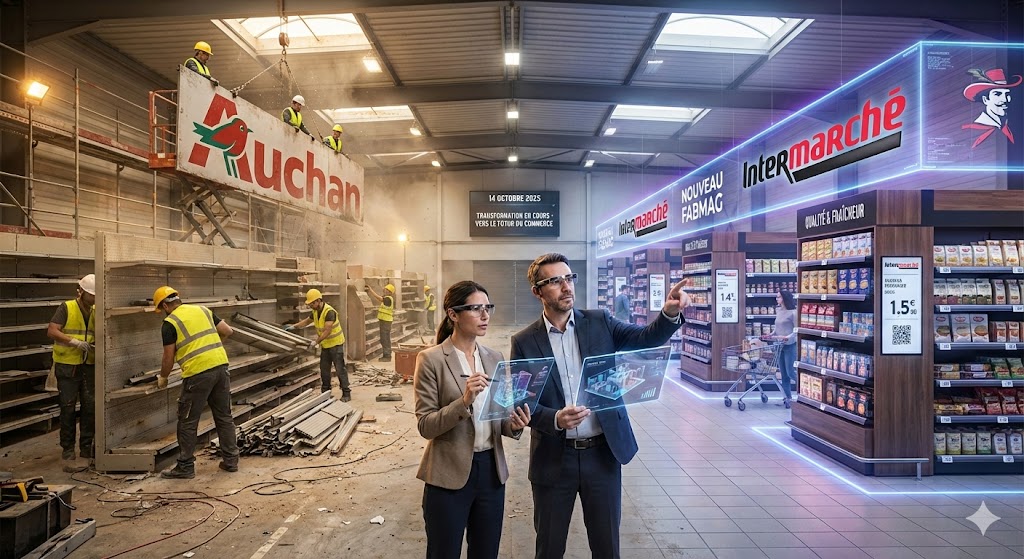Introduction
A planogram is a graphic representation of a department's layout. It is a visual merchandising tool whose aim is to optimize shelf layout in order to maximize sales. Initially created as grid drawings and sent from company headquarters to the points of sale, planograms have evolved into more sophisticated, modern standards, incorporating precise dimensions, 3D graphic output and web interfaces. In this article, we'll define the planogram, explore some of its uses and then question the use of 3D for this tool.
I - What is a planogram?
Planogram definition
A planogram is a precise graphic visualization that shows how products should be arranged on a sales structure, such as a shelf or display unit. Each product is represented with its specific position and the number of units to be displayed. These plans are drawn up according to sales data, ensuring the optimum layout for each item.
The aim of the planogram is therefore to optimize the layout of items on shelves in order to attract customers' attention, optimize sales, and improve the shopping experience by guiding the customer through a fluid shopping experience, generally from left to right and top to bottom.
This tool serves as a visual guide for merchandisers, store managers, category managers and sales teams, describing precisely where each product should be placed. It takes into account factors such as seasonality, current promotions, consumer trends, and other elements influencing customer buying behavior. In this sense, it's an essential tool for efficient sales space management.
Creating the planogram
The development of a planogram is based on a meticulous analysis of sales data, demand forecasts and consumer buying habits. Product categories are prioritized according to popularity and profitability, to determine how much shelf space they will be allocated. The aim is to optimize product availability, avoid stock-outs and encourage cross-selling.
In addition, the planogram takes into account visual considerations such as the color, shape and size of packaging. These elements help to create a harmonious aesthetic on the shelves, making it easier for customers to find products and reinforcing the brand's image.
The ideal location for a product is often determined by consumer behavior studies. Placing items where customers look most often maximizes their visibility and, consequently, their chances of sale. For example, the research firm Enov, which supports major advertisers in various sectors in France and abroad, particularly in marketing and sales issues (understanding targets and markets, innovation, customer experience, communication...) has set up the Virtual Shopper Experience in partnership with the Retail VR platform, which enables shopper research to be carried out without time or budget constraints, since it takes place virtually.
A replay of our webinar co-organized with Enov on the subject of virtual shopper research is now available on LinkedIn!
The evolution of technology has brought sophisticated IT tools for the creation and management of planograms. Dedicated software allows merchandising professionals to virtually visualize product layouts before they are even physically placed in store. These tools also facilitate the dynamic updating of planograms in line with seasonal changes, new trends, or sales feedback.
II - What are the uses of the planogram?
As mentioned at the beginning of this article, developing a planogram in retail is of crucial importance to a brand, as it maximizes product visibility, optimizes the use of often limited shelf space, and ensures consistent presentation across different points of sale. A well-designed planogram makes it easier for customers to find products, enhancing their in-store experience and increasing the likelihood of purchase. What's more, it can be used to highlight promotional products or new items, boosting the impact on sales. By collaborating with the retailer, the planogram becomes an essential trade marketing tool, aligning the brand's objectives with those of the retailer to maximize sales while facilitating precise inventory management, thus contributing to the profitability of both brand and retailer.
Planograms offer several crucial advantages, including reducing out-of-stock situations, optimizing sales and creating an optimal visual layout. Using sales data, planograms ensure that best-selling products occupy the most visible positions, positively influencing customer buying behavior.
III - Why make a 3D planogram?
As previously mentioned, sales data is crucial to the development of effective planograms. Knowing the preferences of the target audience, including average customer height, is essential to placing products in optimal locations. The best locations are generally at eye level, maximizing visibility.
Efficient tools are now used to create 3D planograms and simulate the installation of POS displays, assortments and signage, all in a point-of-sale that is as realistic as possible and in line with the real point-of-sale. Category performance is analyzed immersively. The creation of 3D planograms also enables centralized management of fixtures and assortments for improved collaboration. This is also what Retail VR's 3D Merchandising offer is all about.
.png)
For example, Intermarché has used this solution to improve the decision-making process when introducing a new concept or new furniture. In addition to the time saved in the decision-making process, budgetary savings linked to physical materials such as mark-up used for testing are substantial. Retail Staging makes it very easy to reproduce a physical store as a virtual one, thanks to 3D capture and modeling. In this new environment, concept managers, store owners and customers can test future concepts before implementation. They can simulate new layouts, signage positioning or new assortments. This tool enables brands and retailers to work together to create the store concepts of tomorrow.
Conclusion
In conclusion, planograms are essential tools for optimizing in-store product layout. They play a crucial role in maximizing sales, managing inventory and creating a pleasant visual environment for customers. By understanding the basic principles and using accurate sales data, it is possible to create effective planograms that contribute to commercial success.


.png)

.webp)
.webp)
.webp)